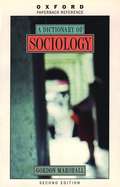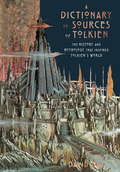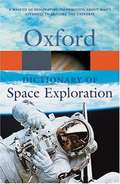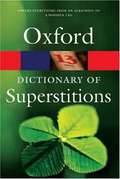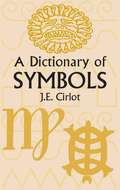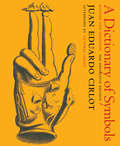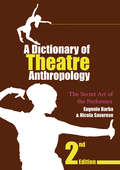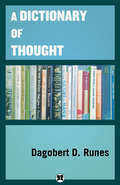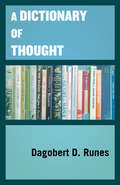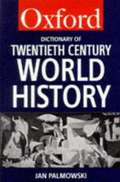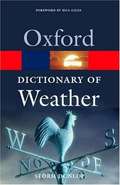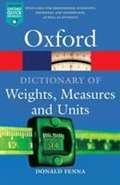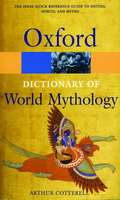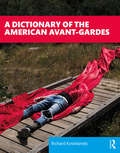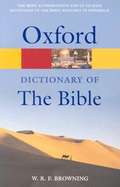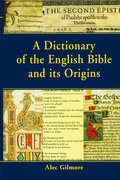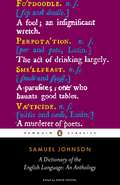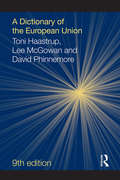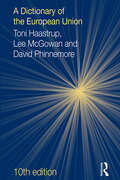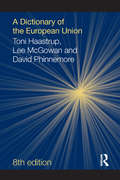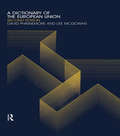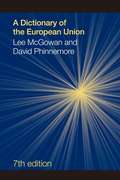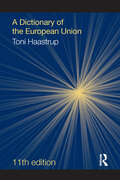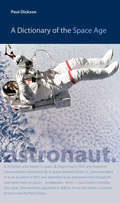- Table View
- List View
A Dictionary of Sociology
by Gordon MarshallThis is the most comprehensive and authoritative dictionary of sociology available in a single volume. Compiled by an expert team of sociologists under the editorship of Gordon Marshall, this new edition has been fully revised and updated. Ideal for those new to the subject, it will also be invaluable to more advanced students as well as teachers. Over 2500 entries Wide-ranging - includes major concepts from related disciplines; International coverage of terms, methods, and concepts; Biographical entries on major figures; Related terms from psychology, economics, anthropology, philosophy, and political science; Contains many substantial entries which are particularly helpful for students. The revision extends coverage of areas such as cultural studies and identity, mass media, nationalism, and developments in sociological research in the US. New entries include: administrative theory, broken window thesis, child abuse, consumer society, cultural studies, diaspora, Hans Eysenck, Goldthorpe Class Scheme, hooliganism, Internet, Japanization, McDonaldization, multi-level models, quality of life, reflexive modernization, sequence analysis,sustainable development, and victimology.
A Dictionary of Sources of Tolkien: The History and Mythology That Inspired Tolkien's World
by David DayThe spellbinding world of Middle-earth is full of beasts and battles, heroes and heroines, and the struggle between good and evil.In this dictionary of sources, Tolkien scholar and best-selling author David Day's four decades of research inform us about the lands, inhabitants, languages, geography and history of Middle-earth.This compelling encyclopedia on Tolkien's world also includes over 200 illustrations and an appendix.This work is unofficial and is not authorized by the Tolkien Estate or HarperCollins Publishers.
A Dictionary of Sources of Tolkien: The History and Mythology That Inspired Tolkien's World
by David DayThe spellbinding world of Middle-earth is full of beasts and battles, heroes and heroines, and the struggle between good and evil.In this dictionary of sources, Tolkien scholar and best-selling author David Day's four decades of research inform us about the lands, inhabitants, languages, geography and history of Middle-earth.This compelling encyclopedia on Tolkien's world also includes over 200 illustrations and an appendix.This work is unofficial and is not authorized by the Tolkien Estate or HarperCollins Publishers.
A Dictionary of Space Exploration
by E. Julius DaschThis fascinating dictionary covers the exciting world of space exploration and every aspect of the technology involved. Containing over 2,500 entries it defines the jargon used in space exploration including such weird and wonderful terms as 'cherry picker' and 'burp firing'. All the entries are fully cross-referenced for ease of use, and important entries, such as the entry on the Apollo project, are presented as detailed feature articles. In addition to the main entries and definitions, the book also contains links to over 250 space-related websites, and a comprehensive chronology of space exploration. The entries are supported by over 50 photographs, illustrations and diagrams. Written by a team of experts, the entries have been edited by Dr E. Julius Dasch, former manager of the NASA National Space Grant Program. This authoritative, comprehensive and readable dictionary is essential reading for anyone with an interest in astronomy and space travel.
A Dictionary of Superstitions
by Iona Opie Moira Tatem EditorsThe vast subject of 'superstitions', taken by us to include divinations, spells, cures, charms, signs and omens, rituals, and taboos, has never before been systematically organized. In this dictionary the editors have assembled chiefly those superstitions from Great Britain and Eire which survived into the nineteenth and twentieth centuries, with a preponderance of the everyday, domestic beliefs with which most readers will be familiar. They have been arranged alphabetically according to their central idea or object, and illustrated with a selection of quotations chronologically ordered to show the history and development of each belief. The quotations are from a wide range of sources: diaries, letters, local histories and glossaries, works of literature, folklore publications, journals, and newspapers.
A Dictionary of Symbols (Dover Occult Ser.)
by J. E. CirlotHumans, it's said, are symbolizing animals. At every stage of civilization, people have relied on symbolic expression, and advances in science and technology have only increased our dependence on symbols. The language of symbols is considered a science, and this informative volume offers an indispensable tool in the study of symbology. It can be used as a reference or simply browsed for pleasure. Many of its entries — those on architecture, mandala, numbers, serpent, water, and zodiac, for example — can be read as independent essays. The vitality of symbology has never been greater: An essential part of the ancient arts of the Orient and of the Western medieval traditions, symbolism underwent a 20th-century revival with the study of the unconscious, both directly in the field of dreams, visions, and psychoanalysis, and indirectly in art and poetry. A wide audience awaits the assistance of this dictionary in elucidating the symbolic worlds encountered in both the arts and the history of ideas.
A Dictionary of Symbols: Revised and Expanded Edition
by Juan Eduardo CirlotA classic encyclopedia of symbols by Catalan polymath Joan Cirlot that illuminates the symbolic underpinnings of myth, modern psychology, literature, and art.Juan Eduardo Cirlot&’s A Dictionary of Symbols is a feat of scholarship, an act of the imagination, and a tool for contemplation, as well as a work of literature, a reference book that is as indispensable as it is brilliant and learned. Cirlot was a composer, a poet, an art critic, and a champion of modern art whose interest in surrealism helped to bring him to the study of symbolism. Carl Jung, Mircea Eliade, René Guénon, Erich Fromm, and Gaston Bachelard also helped to shape his thinking in a book that explores the space between the world at large and the world within, where, as Cirlot sees it, nothing is meaningless, everything is significant, and everything is in some way related to something else. Running from &“abandonment&” to &“zone&” by way of &“flute&” and &“whip,&” spanning the cultures of the world, and including a wealth of visual images to further bring the reality of the symbol home, A Dictionary of Symbols, here published for the first time in English in its original, significantly enlarged form, is a luminous and illuminating investigation of the works of eternity in time.
A Dictionary of Theatre Anthropology: The Secret Art of the Performer
by Eugenio Barba Nicola SavareseFirst Published in 2005. Routledge is an imprint of Taylor & Francis, an informa company.
A Dictionary of Thought
by Karl Marx Dagobert D. RunesThis dictionary, from the pen of the well-known philosopher Dagobert D. Runes, is offered as an attempt to define the borderlines of human thinking and human morality. In 152 pages organized alphabetically, Dr. Runes has created a dictionary of his own philosophical musings indexed by evocative words. Each word is followed by up to several single sentence aphorisms and occasionally a short essay. As a collection, they cover an extremely broad range of topics. In his search for real verities and true humanity, he takes the reader on an arduous thought-provoking voyage through the depths of the mind. This type of soul-searching philosophy, unburdened by traditional manner and terminology, is sometimes baffling, frequently of melancholy character, but almost always fascinating and inspiring.
A Dictionary of Thought
by Dagobert D. RunesAn A-to-Z collection of thoughtful aphorisms and ruminations by the philosopher and founder of the Philosophical Library. In this unique dictionary, philosopher Dagobert D. Runes attempts to define the contours of human thinking and morality. In a series of terms organized alphabetically, Runes systematically sets out his own musings on topics ranging from Abhorrence and Ability to Zeal, Zen, and Zero. Each word is followed by up to several single-sentence aphorisms and occasionally a short essay. In his search for real verities and true humanity, Runes takes the reader on a thought-provoking voyage through the depths of the human mind. This is philosophy as intellectual soul-searching, unburdened by traditional manner and terminology. Sometimes baffling and frequently melancholy, it is always fascinating and inspiring.
A Dictionary of Twentieth-Century World History
by Jan PalmowskiBiographies of world leaders such as Stalin, Kennedy, Thatcher, Yeltsin, Mandela, Rabin, and Netanyahu, as well as political events and movements, key battles, and devastating world events like the Chernobyl disaster are subjects of some of the 2,500 entries. Comprehensive attention is paid to major treaties and political agreements such as Maastricht, the Anglo-Irish Agreement, and the Dayton Accords. Several useful tables are provided, including lists of office-holders and winners of the Nobel peace prize. Annotation copyrighted by Book News, Inc., Portland, OR
A Dictionary of Weather
by Storm DunlopAn authoritative and comprehensive dictionary of weather, forecasting, and climate terms with illustrative examples of specific events and extremes. Find out where and when the world's largest hailstone fell or where the highest temperature was recorded using the list of weather records, and check climate data for different weather types from around the world. Key terms from the related fields of oceanography, hydrology, and climatology are also covered as well as biographical information on important people in the development of meteorology. This is an essential reference source for both professional meteorologists as well as amateurs looking to increase their knowledge of the field.
A Dictionary of Weights, Measures, and Units
by Donald FennaThis comprehensive and authoritative dictionary provides clear definitions of units, prefixes, and styles of weights and measures within the Systeme International (SI), as well as traditional, and industry-specific units. It also includes general historical and scientific background, covering the development of the sequential definitions and sizing of units. This new reference work will prove invaluable to professional scientists, engineers, technicians as well as to students and the general user. Over 1,600 clear and concise entries complete with historical background. Covers a broad range of disciplines, including astronomy, electromagnetics, geology, photography, mathematics, meteorology, physics, and temperature. Notes on associated terminology. Numerous tables, including the geochronologic scale and the equation of time. Comprehensive coverage of the whole Systeme International.
A Dictionary of World Mythology
by Arthur CotterellRecent interest in mythology indicates a general recognition of the power of the poetical tales. But there is still a fair measure of disagreement as to what is the strength of myths. For Plato, the first known user of the term, mythologia meant no more than the telling of stories which usually contained legendary figures. Another theory of origin is that folklore and mythology are almost indistinguishable. In the arrangement of this book can be discerned the seven great traditions of world mythology: namely, West Asia, South and Central Asia, East Asia, Europe, America, Africa, and Oceania.
A Dictionary of the American Avant-Gardes
by Richard KostelanetzFor this American edition of his legendary arts dictionary of information and opinion, the distinguished critic and arts historian Richard Kostelanetz has selected from the fuller third edition his entries on North Americans, including Canadians, Mexicans, and resident immigrants. Typically, he provides intelligence unavailable anywhere else, no less in print than online, about a wealth of subjects and individuals. Focused upon what is truly innovative and excellent, Kostelanetz also ranges widely with insight and surprise, including appreciations of artistic athletes such as Muhammad Ali and the Harlem Globetrotters, and such collective creations as Las Vegas and his native New York City. Continuing the traditions of cheeky high-style Dictionarysts, honoring Ambrose Bierce and Nicolas Slonimsky (both with individual entries), Kostelanetz offers a "reference book" to be treasured not only in bits and chunks, but continuously as one of the ten books someone would take if they planned to be stranded on a desert isle.
A Dictionary of the Bible
by W. R. F. BrowningThis revised edition is the most authoritative, accessible, and up-to-date dictionary of the Bible available in paperback. As well as providing helpful information about important places and personalities, it is particularly concerned to expound the themes and doctrines of the Bible and to indicate their status in the light of modern scholarship. With entries ranging from earthquakes and mice to feminism and the Dead Sea Scrolls, the dictionary is a lively and absorbing reference work for all readers of the Bible. -Over 2,000 entries from Adam to Zechariah -Clear explanations of technical terms, methods of interpretation, and critical analysis, as well as notes on leading biblical scholars and their contributions -Broad coverage includes the books of the Bible, people and places, customs, religions and worship, history, and theology -Takes into account the work of Christian scholars of all denominations and Jewish scholars
A Dictionary of the English Bible and its Origins (Biblical Seminar Ser. #No. 67)
by Alec GilmoreThe Dictionary of the English Bible and Its Origins is designed to increase awareness of the origins of the Bible; to introduce readers to the variety of versions and manuscripts that lie behind the familiar English translations;to provide, in alphabetical order, entries on texts, versions, manuscripts, persons, places and terminology, covering the origins of the Hebrew Bible, the New Testament and the English Bible, including the most recent translations; and generally to facilitate a more intelligent understanding of the Bible among lay people by removing some of the mystique and prejudices associated with it. Entries are factual, not evaluative, and reflect contemporary biblical scholarship. Dictionary of the English Bible and Its Origins will prove to be a handy reference tool for anyone with an interest in the Bible.
A Dictionary of the English Language: an Anthology
by Samuel JohnsonSamuel Johnson's Dictionary, published in 1755, marked a milestone in a language in desperate need of standards. No English dictionary before it had devoted so much space to everyday words, been so thorough in its definitions, or illustrated usage by quoting from Shakespeare and other great writers. Johnson's was the dictionary used by Jane Austen and Charles Dickens, Wordsworth and Coleridge, the Brontës and the Brownings, Thomas Hardy and Oscar Wilde. This new edition, edited by David Crystal, will contain a selection from the original, offering memorable passages on subjects ranging from books and critics to dreams and ethics.
A Dictionary of the European Union
by Toni Haastrup David Phinnemore Lee McGowanThis unique collection of data includes concise definitions and explanations relating to all aspects of the European Union. It explains the terminology surrounding the EU, and outlines the roles and significance of its institutions, member countries, foreign relations, programmes and policies, treaties and personalities. It contains over 1,000 clear and succinct definitions and explains acronyms and abbreviations, which are arranged alphabetically and fully cross-referenced. Among the 1,000 entries you can find explanations of and background details on: ACP states Article 50 Brexit competition policy Donald Tusk the European Maritime and Fisheries Fund the euro Greece Jean-Claude Juncker Europol migration and asylum policy the Schengen Agreement the Single Supervisory Mechanism the single rulebook the Treaty of Lisbon Ukraine
A Dictionary of the European Union
by Toni Haastrup David Phinnemore Lee McGowanThis unique collection of data includes concise definitions and explanations relating to all aspects of the European Union. It explains the terminology surrounding the EU, and outlines the roles and significance of its institutions, member countries, foreign relations, programmes and policies, treaties and personalities. It contains over 1,000 clear and succinct definitions and explains acronyms and abbreviations, which are arranged alphabetically and fully cross-referenced. Among the 1,000 entries you can find explanations of and background details on: ACP states Article 50 Brexit competition policy Donald Tusk the European Maritime and Fisheries Fund the euro Greece Jean-Claude Juncker Europol migration and asylum policy the Schengen Agreement the Single Supervisory Mechanism the single rulebook the Treaty of Lisbon Ukraine
A Dictionary of the European Union
by Toni Haastrup David Phinnemore Lee McGowanThis unique collection of data includes concise definitions and explanations relating to all aspects of the European Union. It explains the terminology surrounding the EU, and outlines the roles and significance of its institutions, member countries, foreign relations, programmes and policies, treaties and personalities. It contains over 1,000 clear and succinct definitions and explains acronyms and abbreviations, which are arranged alphabetically and fully cross-referenced. Among the 1,000 entries you can find explanations of and background details on: ACP states Article 50 Brexit competition policy Donald Tusk the European Maritime and Fisheries Fund the euro Greece Jean-Claude Juncker Europol migration and asylum policy the Schengen Agreement the Single Supervisory Mechanism the single rulebook the Treaty of Lisbon Ukraine
A Dictionary of the European Union
by David Phinnemore Lee McGowanProviding concise definitions and explanations on all aspects of the European Union, this new edition also includes details of the ten states which became full members of the European Union in May 2004. The dictionary:* contains over 1,000 entries* explains the terminology surrounding the EU and outlines the roles and significance of the institutions, member countries, programmes and policies, treaties and personalities* offers clear and succinct definitions* spells out acronyms and abbreviations.
A Dictionary of the European Union
by David Phinnemore Lee McGowanThis unique collection of data includes concise definitions and explanations relating to all aspects of the European Union. It explains the terminology surrounding the EU and outlines the roles and significance of the institutions, member countries, foreign relations, programmes and policies, treaties and personalities. It contains over 1,000 clear and succinct definitions and explains acronyms and abbreviations, which are arranged alphabetically and fully cross-referenced. The book has been fully updated to include details of the elections to the European Parliament and the appointment of the new European Commission in 2014, together with other important revisions. Among the 1,000 entries you can find explanations and background details on:accession negotiations the African Union the ‘Arab Spring’ the Common Agricultural Policy competition policy the European Maritime and Fisheries Fund the euro human rights Jean-Claude Juncker the European Anti-Fraud Office (OLAF) the Schengen Agreement Serbia the Single Supervisory Mechanism the single rulebook the Treaty of Lisbon Ukraine
A Dictionary of the European Union
by Toni Haastrup David Phinnemore Lee McGowanThis unique collection of data includes concise definitions and explanations relating to all aspects of the European Union. It explains the terminology surrounding the EU, and outlines the roles and significance of its institutions, member countries, foreign relations, programmes and policies, treaties and personalities. It contains over 1,000 clear and succinct definitions and explains acronyms and abbreviations, which are arranged alphabetically and fully cross-referenced.Among the 1,000 entries you can find explanations of and background details on: ACP states Article 50 Brexit competition policy the European Maritime and Fisheries Fund the euro Greece Europol migration and asylum policy the Schengen Agreement the Single Supervisory Mechanism the Treaty of Lisbon Ukraine Ursula von der Leyen the Windsor Framework
A Dictionary of the Space Age (New Series in NASA History)
by Paul Dickson2009 Outstanding Academic Title, ChoiceThe launch of Sputnik 1 in 1957 ushered in an exciting era of scientific and technological advancement. As television news anchors, radio hosts, and journalists reported the happenings of the American and the Soviet space programs to millions of captivated citizens, words that belonged to the worlds of science, aviation, and science fiction suddenly became part of the colloquial language. What’s more, NASA used a litany of acronyms in much of its official correspondence in an effort to transmit as much information in as little time as possible. To translate this peculiar vocabulary, Paul Dickson has compiled the curious lingo and mystifying acronyms of NASA in an accessible dictionary of the names, words, and phrases of the Space Age.Aviators, fighter pilots, and test pilots coined the phrases "spam in a can" (how astronauts felt prelaunch as they sat in a tiny capsule atop a rocket booster); "tickety-boo" (things are fine), and "the Eagle has landed" (Neil Armstrong’s famous quote when Apollo 11 landed on the Moon).This dictionary captures a broader foundation for language of the Space Age based on the historic principles employed by the Oxford English Dictionary and Webster’s New Third International Dictionary. Word histories for major terms are detailed in a conversational tone, and technical terms are deciphered for the interested student and lay reader. This is a must-own reference for space history buffs.
